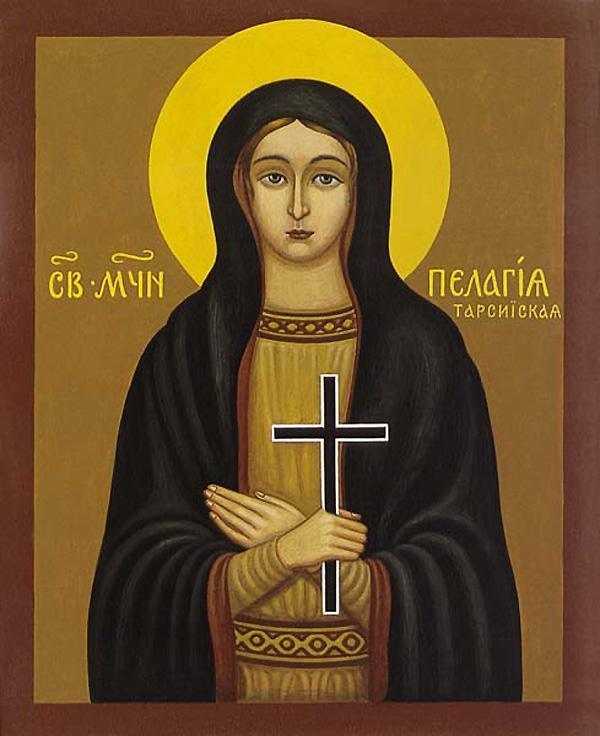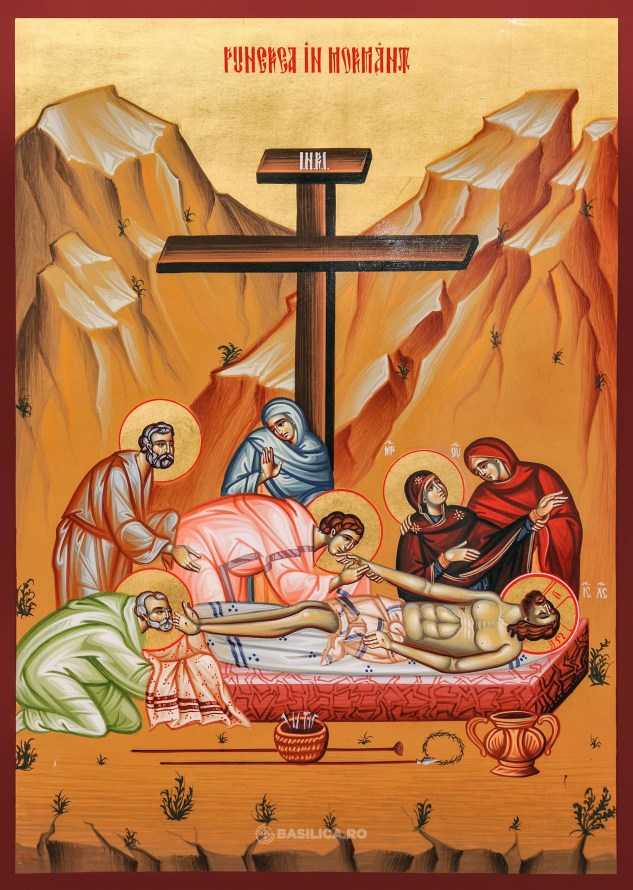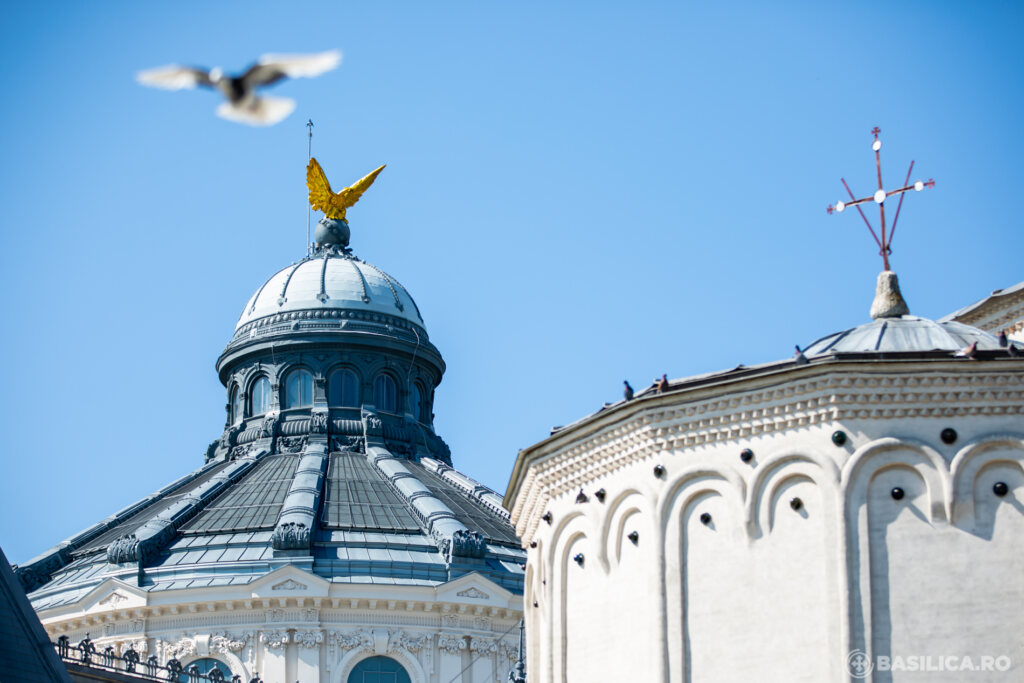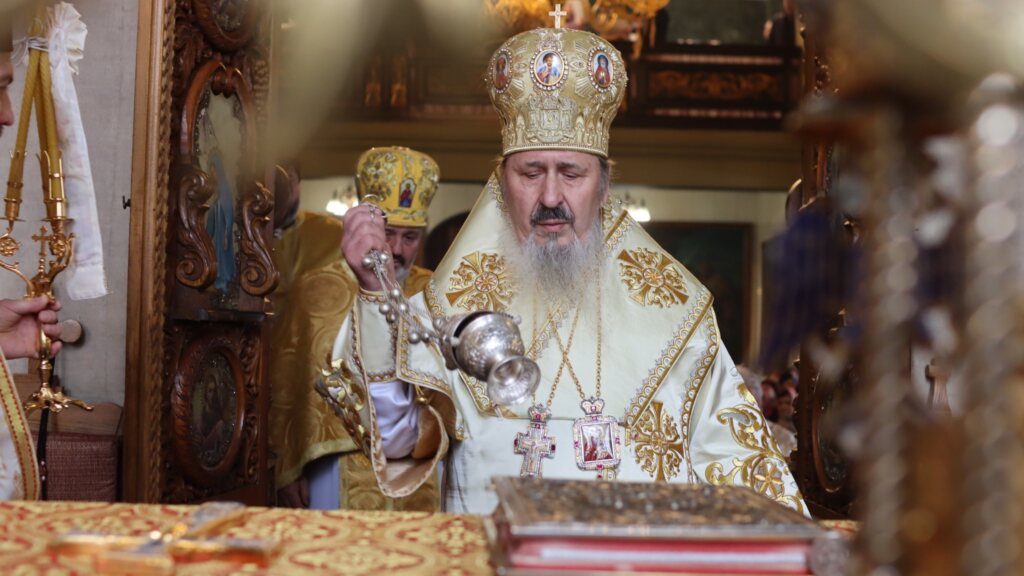Orthodox Calendar – May 4
Great and Holy Saturday
On Great and Holy Saturday the Church contemplates the mystery of the Lord’s descent into Hades, the place of the dead. Death, our ultimate enemy, is defeated from within. “He (Christ) gave Himself as a ransom to death in which we were held captive, sold under sin. Descending into Hades through the Cross … He loosed the bonds of death” (Liturgy of St. Basil).
On Great Saturday our focus is on the Tomb of Christ. This is no ordinary grave. It is not a place of corruption, decay and defeat. It is life-giving, a source of power, victory and liberation.
Great Saturday is the day between Jesus’ death and His resurrection. It is the day of watchful expectation, in which mourning is being transformed into joy. The day embodies in the fullest possible sense the meaning of xarmolipi – joyful-sadness, which has dominated the celebrations of Great Week. The hymnographer of the Church has penetrated the profound mystery, and helps us to understand it through the following poetic dialogue that he has devised between Jesus and His Mother:
“Weep not for me, O Mother, beholding in the sepulcher the Son whom thou hast conceived without seed in thy womb. For I shall rise and shall be glorified, and as God I shall exalt in everlasting glory those who magnify thee with faith and love.”
“O Son without beginning, in ways surpassing nature was I blessed at Thy strange birth, for I was spared all travail. But now beholding Thee, my God, a lifeless corpse, I am pierced by the sword of bitter sorrow. But arise, that I may be magnified.”
“By mine own will the earth covers me, O Mother, but the gatekeepers of hell tremble as they see me, clothed in the bloodstained garment of vengeance: for on the Cross as God have I struck down mine enemies, and I shall rise again and magnify thee.”
“Let the creation rejoice exceedingly, let all those born on earth be glad: for hell, the enemy, has been despoiled. Ye women, come to meet me with sweet spices: for I am delivering Adam and Eve with all their offspring, and on the third day I shall rise again.” (9th Ode of the Canon)
Great Saturday is the day of the pre-eminent rest. Christ observes a Sabbath rest in the tomb. His rest, however, is not inactivity but the fulfillment of the divine will and plan for the salvation of humankind and the cosmos. He who brought all things into being, makes all things new. The re-creation of the world has been accomplished once and for all. Through His incarnation, life and death Christ has filled all things with Himself He has opened a path for all flesh to the resurrection from the dead, since it was not possible that the author of life would be dominated by corruption.
Saint Paul tells us that: “God was in Jesus Christ reconciling the world to Himself” (2 Corinthians 5:19). Hence, eternal life – real and self-generating – penetrated the depths of Hades. Christ who is the life of all destroyed death by His death. That is why the Church sings joyously “Things now are filled with light, the heaven and the earth and all that is beneath the earth” (Canon of Pascha).
The Church knows herself to be “the place, the eternal reality, where the presence of Christ vanquishes Satan, hell and death itself.
The solemn observance of Great Saturday help us to recall and celebrate the great truth that “despite the daily vicissitudes and contradictions of history and the abiding presence of hell within the human heart and human society,” life has been liberated! Christ has broken the power of death.
It is not without significance that the icon of the Resurrection in our Church is the Descent of Christ into Hades, the place of the dead. This icon depicts a victorious Christ, reigned in glory, trampling upon death, and seizing Adam and Eve in His hands, plucking them from the abyss of hell. This icon expresses vividly the truths resulting from Christ’s defeat of death by His death and Resurrection.
Mary Magdalene, Mary, the Mother of God, John the beloved disciple, and Joseph of Arimathea are shown preparing Christ’s body for the tomb. Icon provided by Athanasios Clark and used with permission. Icon of the Epitaphios Thrinos provided by Athanasios Clark and used with permission.
Saint Pelagia of Tarsus in Cilicia (southeastern Asia Minor)
She lived in the third century, during the reign of Diocletian (284-305), and was the daughter of illustrious pagans. When she heard about Jesus Christ from her Christian friends, she believed in Him and desired to preserve her virginity, dedicating her whole life to the Lord.
Pelagia’s reply greatly angered the young man, but he decided to leave her in peace for awhile, hoping that she would change her mind. At the same time, Pelagia convinced her mother to let her visit the nurse who had raised her in childhood. She secretly hoped to find Bishop Linus of Tarsus, who had fled to a mountain during a persecution against Christians, and to be baptized by him.
She had seen the face of Bishop Linus in a dream, which made a profound impression upon her. The holy bishop told her to be baptized. Saint Pelagia traveled in a chariot to visit her nurse, dressed in rich clothes and accompanied by a whole retinue of servants, as her mother wished.
Along the way Saint Pelagia, by the grace of God, met Bishop Linus. Pelagia immediately recognized the bishop who had appeared to her in the dream. She fell at his feet, requesting Baptism. At the bishop’s prayer a spring of water flowed from the ground.
Bishop Linus made the Sign of the Cross over Saint Pelagia, and during the Mystery of Baptism, angels appeared and covered the chosen one of God with a bright mantle. After giving the pious virgin Holy Communion, Bishop Linus offered a prayer of thanksgiving to the Lord with her, and then sent her to continue her journey. She then exchanged her expensive clothing for a simple white garment, and distributed her possessions to the poor. Returning to her servants, Saint Pelagia told them about Christ, and many of them were converted and believed.
She tried to convert her own mother to Christ, but the obdurate woman sent a message to Diocletian’s son that Pelagia was a Christian and did not wish to be his wife. The youth realized that Pelagia was lost to him, and he fell upon his sword in his despair.
Pelagia’s mother feared the emperor’s wrath, so she tied her daughter up and led her to Diocletian’s court as a Christian who was also responsible for the death of the heir to the throne. The emperor was captivated by the unusual beauty of the virgin and tried to turn her from her faith in Christ, promising her every earthly blessing if she would become his wife.
The holy virgin refused the emperor’s offer with contempt and said, “You are insane, Emperor, saying such things to me. I will not do your bidding, and I loathe your vile marriage, since I have Christ, the King of Heaven, as my Bridegroom. I do not desire your worldly crowns which last only a short while.
The Lord in His heavenly Kingdom has prepared three imperishable crowns for me. The first is for faith, since I have believed in the true God with all my heart; the second is for purity, because I have dedicated my virginity to Him; the third is for martyrdom, since I want to accept every suffering for Him and offer up my soul because of my love for Him.”
Diocletian sentenced Pelagia to be burned in a red-hot bronze bull. Not permitting the executioners to touch her body, the holy martyr signed herself with the Sign of the Cross, and went into the brazen bull and her flesh melted like myrrh, filling the whole city with fragrance.
Saint Pelagia’s bones remained unharmed and were removed by the pagans to a place outside the city. Four lions then came out of the wilderness and sat around the bones letting neither bird nor wild beast get at them. The lions protected the relics of the saint until Bishop Linus came to that place. He gathered them up and buried them with honor. Later, a church was built over her holy relics.
The Service to the holy Virgin Martyr Pelagia of Tarsus says that she was “deemed worthy of most strange and divine visions.” She is also commemorated on October 7.
During the reign of Emperor Constantine (306-337), when the persecutions against Christians had stopped, a church was built at Saint Pelagia’s burial place.
Troparion — Tone 3
Through your knowledge of the Faith you abandoned the darkness of ignorance, / fairest virgin of Christ. / You were refreshed by dew and finished your contest by fire. / Glorious martyr Pelagia, / entreat Christ our God to grant us His great mercy!
Saint Monica, mother of Blessed Augustine
Saint Monica, the mother of Blessed Augustine of Hippo (June 15), was born in 322 in Tagaste, North Africa. Her parents were Christians, but little is known of her early life. Most of our information about her comes from Book IX of her son’s Confessions.
Saint Monica was married to a pagan official named Patritius, who had a short temper and lived an immoral life. At first, her mother-in-law did not like her, but Monica won her over by her gentle disposition.
Saint Monica and Patritius had three children: Saint Augustine, Navigius and Perpetua. It was a source of great sorrow to her that Patritius would not permit them to be baptized. She worried about Augustine, who lived with a young woman in Carthage and had an illegitimate son with her. Her constant prayers and tears for her son had the effect of converting her husband to Christ before his death. Augustine, however, continued on the path that led away from Christ.
While in Carthage, Augustine fell under the influence of the heretical Manichean sect. His mother was horrified and tried to turn him away from his error. She had a dream in which she was told to be patient and gentle with her son. Augustine, however, paid little attention to her arguments, and remained in his delusion for nine years. Saint Monica must have felt disheartened and disappointed, but she never gave up on him. She even tried to enlist the help of a bishop who had once been a Manichean himself, but he would not dispute with Augustine. He said he couldn’t reason with the young man, because he was still attracted by the novelty of the heresy. He did reassure her saying, “Go on your way, and God bless you, for it is not possible that the son of these tears should be lost.”
Saint Monica went to Rome with Augustine when he lectured there in 383. Later, he received an appointment to Milan, where he met Saint Ambrose (December 7) and was greatly impressed by his preaching. Bishop Ambrose came to have a high regard for Saint Monica, and often congratulated Augustine on having such a virtuous mother.
One day Augustine was reading the New Testament in a garden, and came to Romans 13:12-14. There and then Augustine decided to “cast off the works of darkness,” and to “put on the Lord Jesus Christ.” He was baptized on the eve of Pascha in 387.
After his baptism, Augustine and his mother planned to return to Africa. They stopped to rest in Ostia, where Saint Monica fell asleep in the Lord at the age of fifty-six. She was buried at Ostia, and her holy relics were transferred to the crypt of a church in the sixth century. Nine centuries later, Saint Monica’s relics were translated to Rome.
In the West, Saint Monica is considered the patron saint of wives and mothers whose husbands or sons have gone astray.
Tr by oca.org








